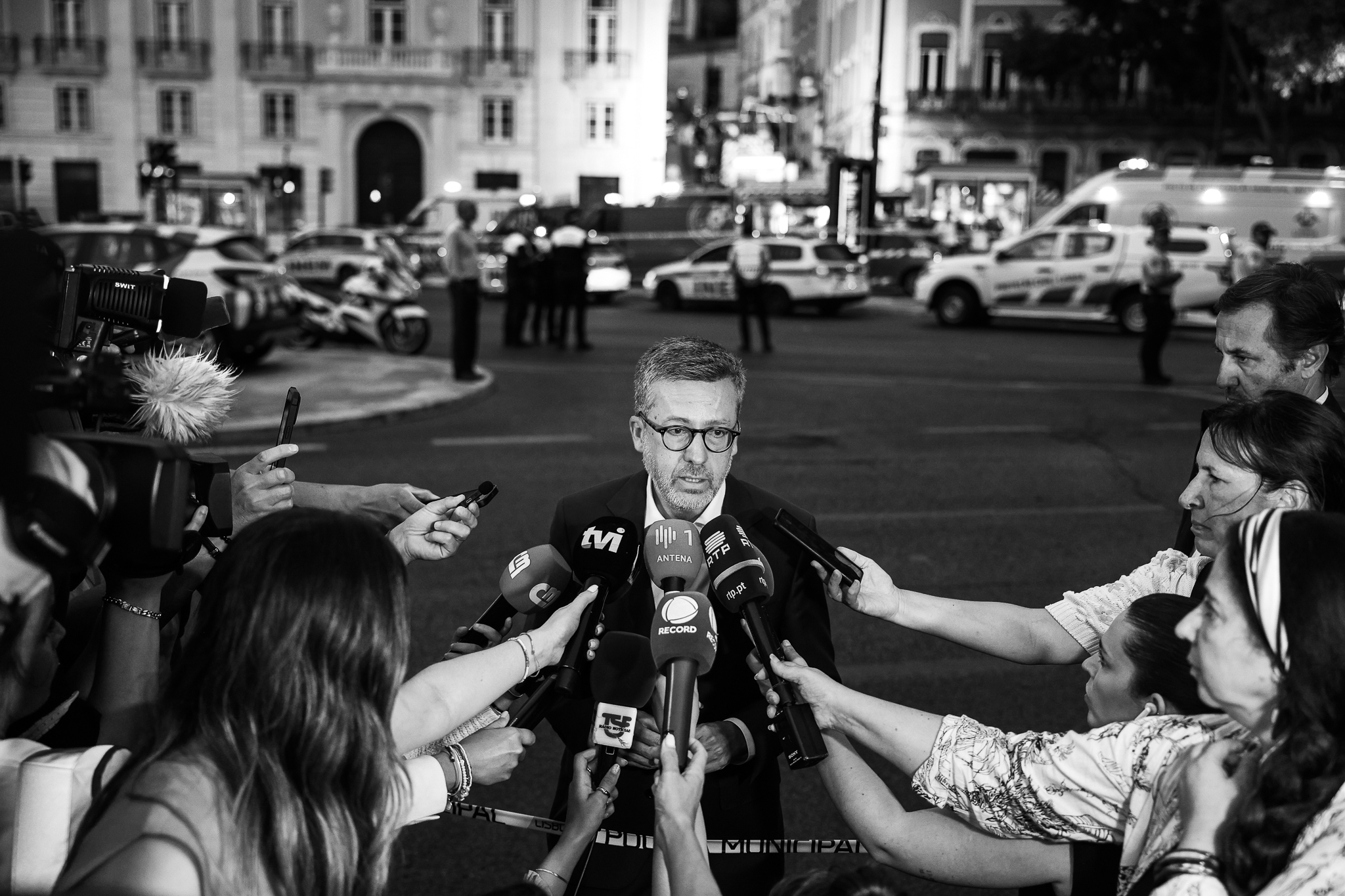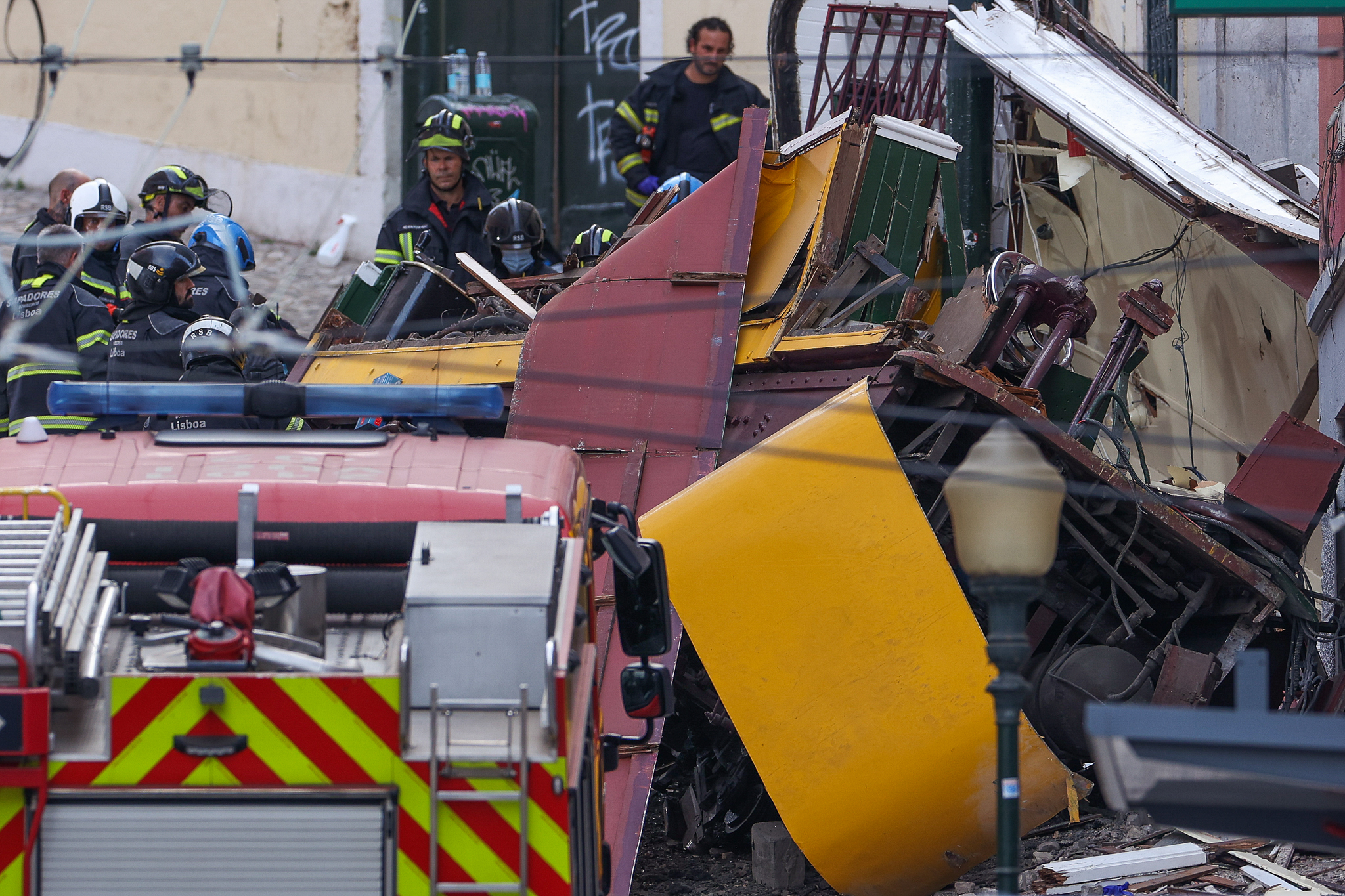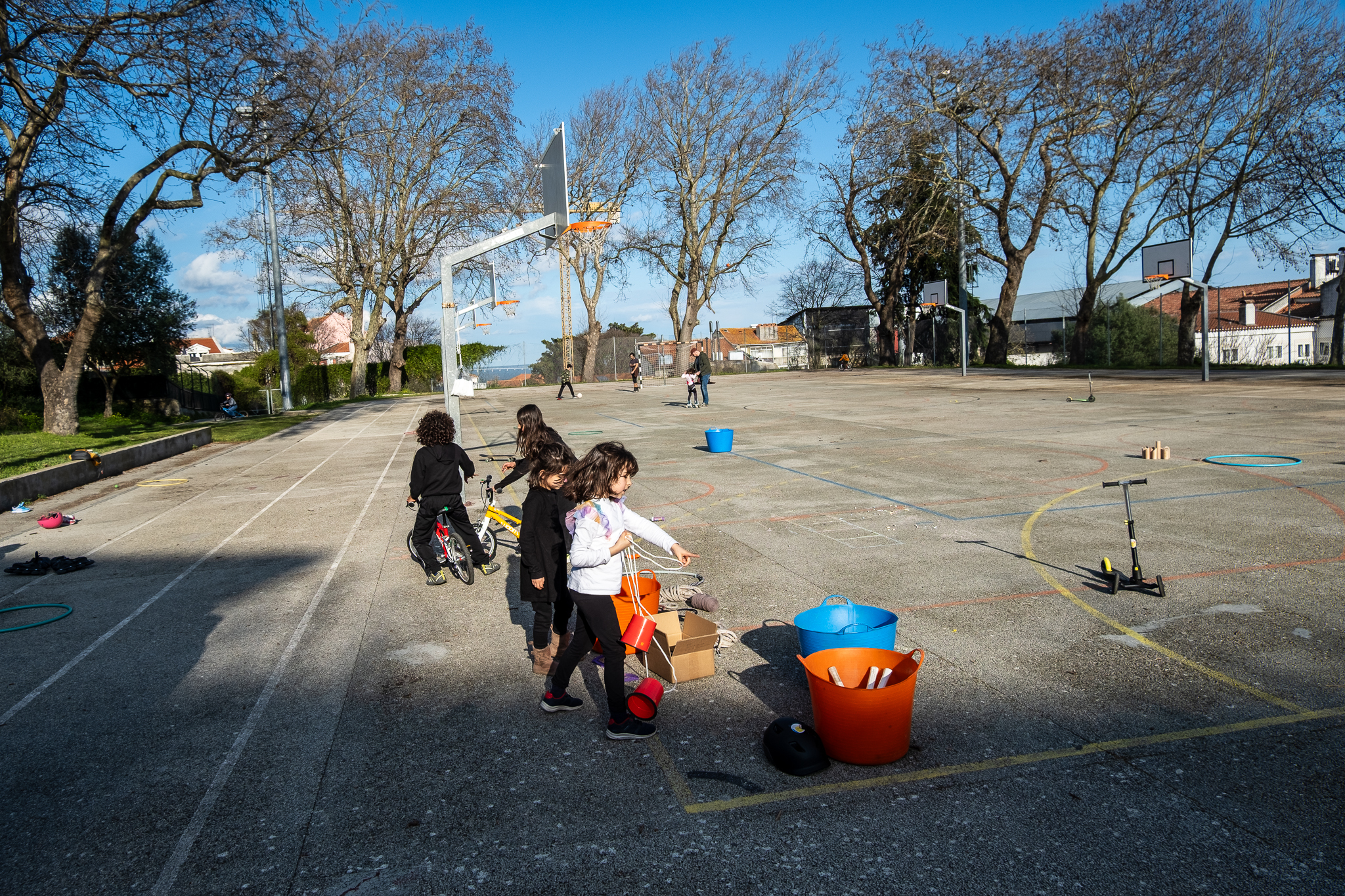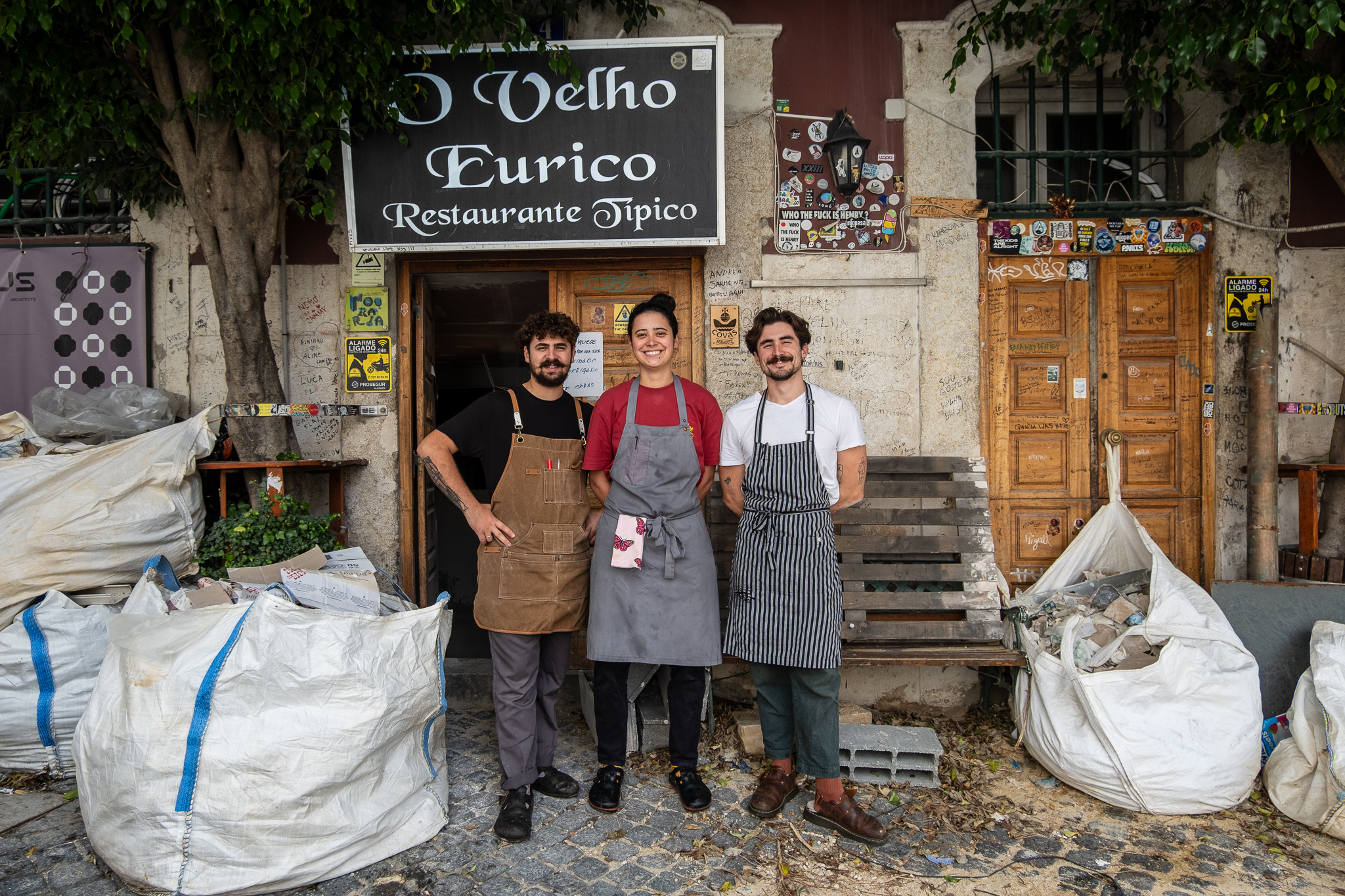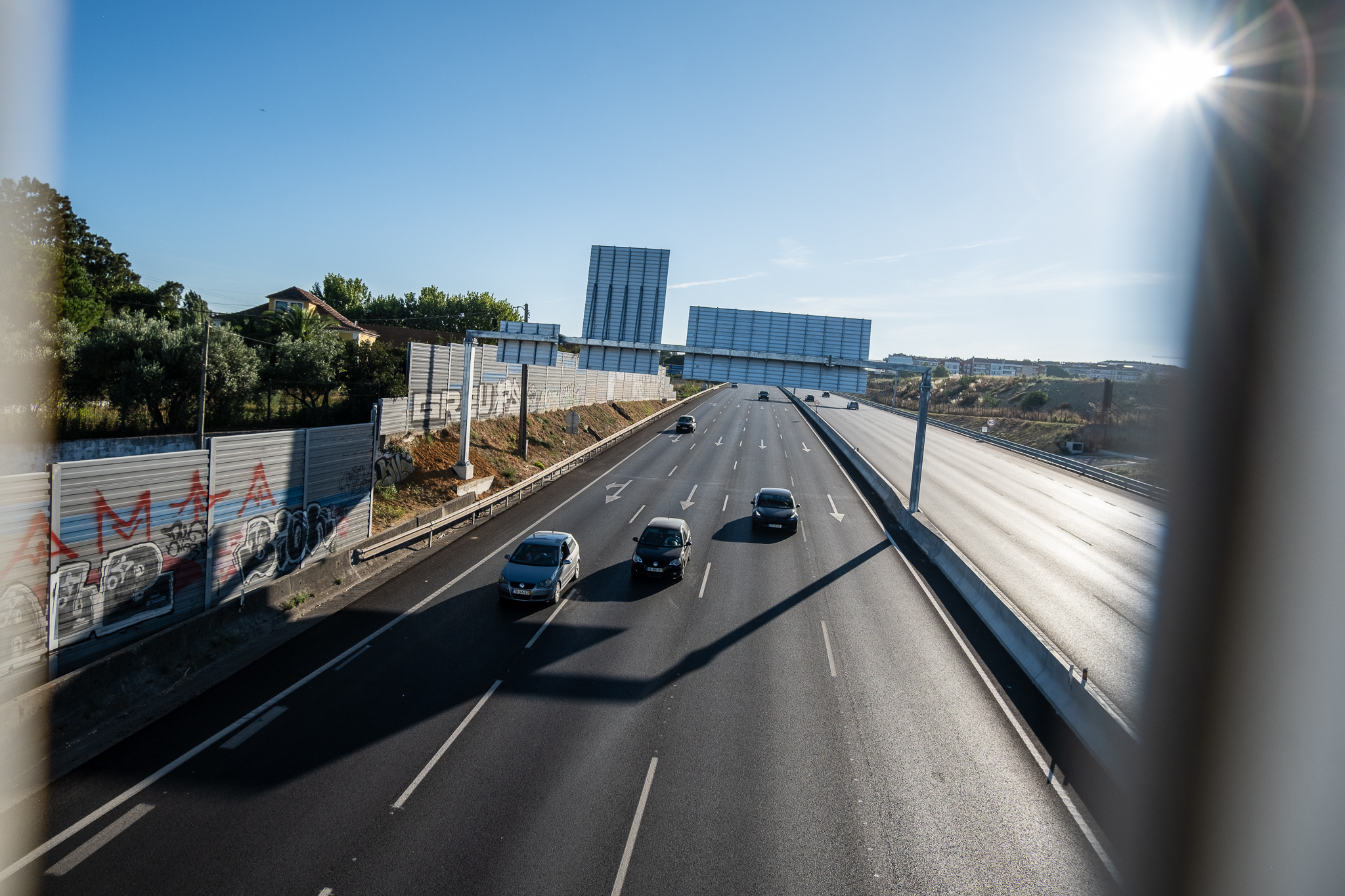A Câmara de Almada vai requalificar cinco espaços públicos do concelho com a comunidade, envolvendo-a em todo o processo, desde a discussão de ideias até à concretização das obras. As primeiras sessões de participação decorrem entre esta semana e o início de Abril.

A Câmara de Almada quer auscultar a população na requalificação de cinco espaços públicos por todo o concelho. Os cinco espaços vão ser escolhidos pelas pessoas, que terão a oportunidade também de apresentar ideias e também de votar nas propostas de requalificação que serão apresentadas. A iniciativa chama-se O Meu Bairro e arranca já nesta semana.
Entre 13 de Março e 5 de Abril, vão decorrer as primeiras cinco sessões participativas, uma por cada freguesia/união de freguesias. Em cada encontro, serão apresentados dois espaços públicos, previamente identificados pela Câmara de Almada; as pessoas poderão fazer sugestões, colocar questões e apresentar ideias de requalificação. Posteriormente, dos dois espaços previamente identificados por freguesia/união de freguesia, será escolhido através de votação online um local para intervencionar. Esta fase de votação vai acontecer entre 6 a 21 de Abril.
Pessoas envolvidas da ideia à obra
Depois de seleccionados os cinco locais, serão apresentadas ao público as propostas de intervenção onde a comunidade poderá partilhar, novamente, as suas ideias e opiniões, contribuindo para a fase de realização do projeto de (re)qualificação de espaço público. Depois de concluído o projecto de execução e o processo de lançamento da empreitada, segue-se a execução da obra. Após a sua conclusão, a população terá cinco novos espaços públicos no concelho para deles usufruir e será envolvida também nesta fase, uma vez que a ideia é que as pessoas possam, num espírito de cooperação, contribuir também para as prosperidade das novas praças e largos.

O programa O Meu Bairro “tem como objectivo promover a qualificação urbana e paisagística, impulsionar a mobilidade activa, a acessibilidade, o aumento de segurança e conforto urbano, a sustentabilidade, o acesso à arte pública e a redução das desigualdades na utilização do espaço público”, indica a Câmara de Almada em comunicado. “Em colaboração com as cinco Uniões de Freguesia do concelho, desenvolve-se um programa participativo que envolve a comunidade educativa, comerciantes locais, organizações da sociedade civil, organismos municipais e a comunidade local nas fases de seleção dos locais a intervir, na definição do programa, na apresentação de contributos para a realização do projeto de requalificação do espaço público e na sua posterior monitorização.”
O arranque do programa está marcado para esta quarta-feira, dia 13 de Março, a partir das 18 horas, com a primeira sessão participativa a acontecer na Biblioteca Municipal Maria Lamas, no Monte da Caparica. Esta sessão diz respeito à União de Freguesias de Caparica e Trafaria, onde estão seleccionados dois locais: o Largo Manuel Arriaga, na Trafaria; e o Largo da Torre, no Monte da Caparica. Podes saber mais sobre o programa O Meu Bairro aqui.
O calendário das sessões
Toma nota das cinco sessões participativas de lançamento:
| Freguesia ou União de Freguesias | Locais identificados | Sessões participativas |
|---|---|---|
| Caparica e Trafaria | – Largo da Torre (ou Largo Bulhão Pato), Monte de Caparica; – Largo Manuel de Arriaga, Trafaria | 13 de Março, 18h00 | Biblioteca Municipal Maria Lamas, Monte da Caparica |
| Almada, Cova da Piedade, Pragal e Cacilhas | – Rua Eduardo Tavares, Cova da Piedade; – Rua Quinta da Horta/Rua Marquesa da Alorna, Pragal | 20 de Março, 18h30 | Sede da União de Freguesias (Rua D. Leonor de Mascarenhas 44A, Almada) |
| Charneca de Caparica e Sobreda | – Rua Abel Salazar/Rua Rafael Bordalo Pinheiro, Charneca da Caparica; – Rua Vitor Péon, Sobreda | 22 de Março, 21h00 | Auditório António Rodrigues Anastácio, Charneca de Caparica |
| Costa da Caparica | – Igreja de N. S.ª da Conceição/Av. 1.º Maio, Costa da Caparica – Rua Mestre Salvador Catita/Rua Mestre Adrião, Costa da Caparica | 1 de Abril, 18h00 | Auditório Costa da Caparica (no 1º piso do Centro Comercial “O Pescador”, na Praça da Liberdade) |
| Laranjeiro e Feijó | – Praceta Bento Jesus Caraça, Laranjeiro – Praceta Oliveira Martins, Feijó | 5 de Abril, 21h00 | Sede da União de Freguesias (Rua da Alembrança, Feijó) |
Os locais
Fica a conhecer os 10 espaços públicos identificados pela Câmara de Almada, sendo os textos seguintes da responsabilidade desta entidade (apenas os reproduzimos):
Caparica e Trafaria

Largo da Torre, Caparica
Enquadramento: espaço de génese rural que apresenta ainda reminiscências da antiga Quinta da Torre. Próximo da Universidade Nova de Lisboa (UNL/FCT), o Largo encontra-se atualmente enquadrado por construções antigas com interesse patrimonial e infraestruturas viárias recentes, como a Av. Timor Lorosae, cuja abertura contribuiu para a sua descaracterização.
Diagnóstico: trata-se de um espaço de dimensão considerável, com boa acessibilidade a transportes públicos (MST e autocarros). Verifica-se indefinição na utilização do espaço e nos arruamentos existentes com duas variantes (vias) rasgadas a norte. Existem estruturas, construções e muros antigos em ruínas, que pertenciam à antiga Quinta da Torre, que constituem património que deverá ser preservado, valorizado e divulgado. No edifício a sul da praça viveu Bulhão Pato.
Ideia: criação de uma praça, privilegiando o espaço de encontro e o aumento das áreas permeáveis com reforço da estrutura verde, através da plantação de árvores, arbustos e herbáceas. A intervenção deverá ainda promover a reestruturação da rede viária, a ligação pedonal ao campus da UNL/FCT e a valorização do património histórico e cultural que caracteriza o local.

Largo Manuel de Arriaga, Trafaria
Enquadramento: espaço localizado no Núcleo Histórico e na Área de Reabilitação Urbana (ARU) da Trafaria. Na sua envolvente existem diversos edifícios já reabilitados no âmbito deste programa. A partir do Largo Manuel de Arriaga tem-se acesso ao Mercado Municipal (cargas e descargas), Capela Mortuária da vila da Trafaria e Centro Paroquial de S. Pedro.
Diagnóstico: área muito central na vila da Trafaria, pavimentada em calçada de vidraço. Ergue-se, no início do Largo Manuel de Arriaga, o Chafariz da Trafaria, datado de 1948, enquadrado por dois canteiros retangulares arborizados. O Largo apresenta estacionamento abusivo ocupando os passeios, não encontrando assegurada a acessibilidade universal; o Chafariz encontra-se em mau estado de conservação.
Ideia: melhorar a imagem urbana consolidando-se a autenticidade do lugar. Com a proposta de reorganização da estrutura viária neste Largo pretende-se enquadrar e valorizar o Chafariz da Trafaria (após a sua recuperação) com uma praça arborizada, reforçando a estrutura verde e prevendo-se áreas de estadia que promovam as vivências de proximidade. Para a requalificação deste espaço público além de garantir a acessibilidade universal pretende-se ainda a renovação do mobiliário urbano, como forma de incentivo ao lazer.
Almada, Cova da Piedade, Pragal e Cacilhas

Rua Quinta da Horta/Rua Marquesa de Alorna, Pragal
Enquadramento: espaço intersticial localizado em área urbana consolidada, a sul do complexo desportivo “Almada Atlético Clube” e adjacente às instalações da “AIPICA”. Espaço marcado pelo acentuado declive do terreno, onde se implantaram edifícios em patamares a cotas muito distintas, servidos por arruamentos com pouco estacionamento formal.
Diagnóstico: espaço localizado no interior de quarteirão urbano, com acesso pedonal por diversos arruamentos, dificultado por estacionamento abusivo. Desenvolve-se em encosta virada a sul, com grande diferença de cotas entre o topo norte e o topo sul. A meia encosta encontra-se um campo polidesportivo degradado e desativado. Os taludes que o circundam encontram-se estabilizados com plantações bem desenvolvidas. Alguns dos exemplares arbóreos encontram-se com bom desenvolvimento vegetativo compatível com a espécie e que serão de preservar. Existem ainda zonas pedonais inacabadas e com reduzida ligação aos edifícios habitacionais.
Ideia: melhorar a acessibilidade universal para promoção da interação social e do ambiente urbano, através do reforço da estrutura verde, novo mobiliário urbano e a reconversão do polidesportivo em praça de estadia.

Rua Eduardo Tavares, Cova da Piedade
Enquadramento: espaço localizado em área urbana consolidada, rodeado de edifícios de 3/4 pisos, das décadas de 1950/60. O espaço público ajardinado resolve, através de taludes, os desníveis existentes e os acessos aos diversos edifícios a cotas distintas.
Diagnóstico: jardim urbano formal datado das décadas de 1960/70, com intervenções de reabilitação pontuais. Área contida entre fachadas de edifícios habitacionais e arruamentos. Espaço compartimentado com zonas plantadas e zonas pedonais de estadia, que com o decorrer do tempo foram ficando desvirtuadas e degradadas. Toda a envolvente direta deste espaço se encontra ocupada com estacionamento automóvel abusivo, dificultando a circulação pedonal.
Ideia: reconversão e atualização deste espaço, enquanto jardim formal, com vista ao reforço da interação social; renovação do mobiliário urbano, reforço da estrutura verde e transferência da zona de estadia existente a poente para a praça central, onde se propõe igualmente a instalação de um quiosque/bar com esplanada. As áreas de estacionamento adjacentes à Avenida Rainha D. Leonor e à Rua Eduardo Tavares deverão ser reformuladas e reorganizadas. Prevê-se ainda a relocalização das áreas para deposição de Resíduos Sólidos Urbanos.
Charneca de Caparica e Sobreda

Rua Abel Salazar/Rua Rafael Bordalo Pinheiro, Charneca da Caparica
Enquadramento: espaço localizado em área densamente construída, com uma malha urbana reticulada e sem pontos de referência. Caracteriza-se pela presença exclusiva de moradias unifamiliares e reduzida oferta de locais de encontro e convívio.
Diagnóstico: área totalmente permeável, sem qualquer tipo de intervenção construída. Apresenta-se em estado naturalizado, sem acidentes morfológicos, com elementos arbóreos de grande porte e em boas condições fitossanitárias que se considera importante preservar. Com boas condições de acessibilidade universal, este local apresenta uma aptidão natural para a criação de uma zona de estadia e desporto em natureza. Atualmente utilizada abusivamente como local de depósito de restos de obra e atravessamento viário.
Ideia: criação de um espaço vocacionado para o desporto em natureza e a interação social. Pretende-se a instalação de um percurso de arborismo de reduzido grau de dificuldade e equipamento desportivo complementar, zonas de estadia com parque de merendas e equipamento de recreio infantil. Deverá também a estrutura verde ser reabilitada e reforçada com nova plantação de árvores, arbustos e herbáceas.

Rua Vitor Péon, Sobreda
Enquadramento: espaço localizado no interior de quarteirão em “U” construído na década de 1970 e adjacente à Escola Básica Elias Garcia. Nos espaços públicos a nascente, encontram-se implantados um parque infantil e o “Campo de Basquete da Sobreda”. Os arruamentos encontram-se pouco formalizados e sem remates. Os percursos pedonais ocorrem informalmente, sem qualquer tratamento.
Diagnóstico: área de dimensões generosas, com diferenças altimétricas consideráveis que resultam na existência de extensas zonas de talude. Espaço público degradado, com percursos em terra batida e restos de obra. Estacionamento automóvel abusivo e desordenado ocupando zonas de circulação pedonal. Alguns exemplares arbóreos apresentam bom desenvolvimento vegetativo compatível com a espécie, a preservar. Zonas pedonais inacabadas, dificultando o acesso aos edifícios habitacionais.
Ideia: criação de um espaço de estadia vocacionado para a interação social, que promova o reforço da identidade e imagem do bairro, formalizando-se assim o “Jardim Vitor Péon” (desenhador de Banda Desenhada). Pretende-se regrar o estacionamento e a circulação automóvel, criar novas zonas de estadia, reorganizar e reforçar a estrutura verde existente com plantação de novo material vegetal e estabilização de taludes. Em todo o espaço será garantida a acessibilidade universal.
Costa da Caparica

Igreja de N. S.ª da Conceição/Av. 1.º Maio, Costa da Caparica
Enquadramento: espaço público envolvente à Igreja Matriz de Nossa Senhora da Conceição, localizada junto ao principal eixo de entrada na cidade e de acesso ao paredão e às praias. A envolvente apresenta usos residenciais, comerciais e de serviços.
Diagnóstico: arruamentos localizados na zona central da cidade da Costa da Caparica junto à Igreja Matriz de Nossa Senhora da Conceição, do século XIX, que sucedeu ao pequeno templo de madeira e telhado de colmo erguido pelos primeiros habitantes da Costa da Caparica. Área parcialmente pedonal com importância histórica para a comunidade da Costa da Caparica. Os arruamentos apresentam estacionamento abusivo ocupando os passeios; as áreas plantadas ou arborizadas encontram-se em mau estado de conservação e os pavimentos e balizadores da zona pedonal degradados.
Ideia: melhorar a imagem urbana através do reforço da estrutura verde e do incremento de áreas permeáveis. Com a proposta de reorganização da estrutura viária na envolvente à Igreja e sequente formalização de estacionamento na Rua Teixeira da Cunha, pretende-se a criação de uma grande Praça arborizada com áreas de estadia que promovam as vivências de proximidade. Para a sua requalificação contribuirá ainda a instalação de mobiliário urbano, que valorizará a paisagem urbana e a função social e de lazer que se pretende para este espaço.

Rua Mestre Salvador Catita/Rua Mestre Adrião, Costa da Caparica
Enquadramento: arruamentos localizadas no primeiro Bairro dos Pescadores da Costa da Caparica. Uso essencialmente residencial com pequenos edifícios em alvenaria, que são a evolução dos antigos “palheiros” originais de madeira, apresentando-se o espaço da rua, na sua vertente pedonal, como local de convívio.
Diagnóstico: área muito central e parcialmente pedonal, com grande importância histórica para a comunidade piscatória da Costa da Caparica. Apresenta-se, nos dias de hoje, como um local com relevância turística. Na Rua Mestre Salvador Catita (Rua 14), os pavimentos pedonais encontram-se em mau estado de conservação, ocorrendo estacionamento abusivo no seu troço viário. A Rua Mestre Adrião (Rua 15), totalmente pedonal, é a mais colorida e autêntica da Costa da Caparica, apresentando pinturas no chão realizadas pelos moradores, com quadras alusivas à praia e à pesca, marca identitária que importa preservar e apoiar.
Ideia: reforço da identidade, consolidando a simplicidade e autenticidade deste lugar. Pretende-se melhorar e potenciar a imagem urbana destes arruamentos, apoiando iniciativas como “Pinturas na Rua 15” e alargando o conceito à denominada Rua 14, promovendo a Arte Urbana através da iniciativa “Pintura na rua 14”, a realizar com a colaboração de moradores e artistas locais. Propõe-se ainda a instalação de mobiliário urbano móvel que possibilite a instalação de vegetação, incentive o lazer e potencie a interação social e o espírito comunitário.
Laranjeiro e Feijó

Praceta Bento de Jesus Caraça, Laranjeiro
Enquadramento: espaço localizado numa zona habitacional com presença de comércio em pisos térreos, enquadrado por edifícios de 4 pisos que formam um quarteirão em “U”, aberto a sul para a movimentada Rua Bento de Jesus Caraça.
Diagnóstico: o grande porte dos plátanos existentes, permite um favorável conforto climático em meio urbano. A inexistência de declives acentuados permite assegurar espaços acessíveis em termos de mobilidade pedonal, propícios ao convívio e lazer, na proximidade dos edifícios habitacionais. Não existe qualquer equipamento infantil ou desportivo. O espaço apresenta apenas alguns bancos de jardim e pequenos muretes de contenção, que carecem de manutenção.
Ideia: criação do Jardim Bento de Jesus Caraça (matemático) enquanto espaço vocacionado para interação social e intergeracional. Pretende-se o reforço da estrutura verde através da criação de áreas permeáveis e novas plantações de espécies herbáceas e arbustivas, bem como a manutenção dos plátanos existentes, que proporcionam sombra no verão e permitem o sol no inverno. Deverá ser instalado novo mobiliário urbano e garantida a acessibilidade universal do espaço.

Praceta Oliveira Martins, Feijó
Enquadramento: área expectante acessível através da Praceta de Oliveira Martins, localiza-se no tardoz da Igreja Paroquial de São José Operário e do Centro Comunitário. O espaço, pontuado por pinheiros mansos de grande porte, consiste numa plataforma aplanada, rodeada por taludes declivosos que descem até ao Complexo Municipal dos Desportos.
Diagnóstico: o espaço encontra-se totalmente permeável, nunca tendo sido alvo de tratamento ou utilização pré-definida, verificando-se algum sentimento de insegurança na sua utilização. Existem alguns caminhos pedonais informais resultantes da utilização de percursos de atravessamento. Espaço naturalizado com exemplares de árvores autóctones em bom estado fitossanitário, com presença incipiente dos estratos arbustivo e herbáceo.
Ideia: criar um espaço seguro e funcional, facilmente utilizável e percorrível, através do ordenamento da rede de caminhos pedonais e do remate viário na ligação à Praceta de Oliveira Martins. Será criado um parque/circuito desportivo, com a instalação de aparelhos de fitness, em complemento dos equipamentos existentes na envolvente. Pretende-se igualmente a criação de zonas de estadia e lazer para contemplação das vistas desafogadas e a instalação de um parque canino. Deverão ser preservados os exemplares arbóreos relevantes e ser reforçada a restante estrutura verde.

